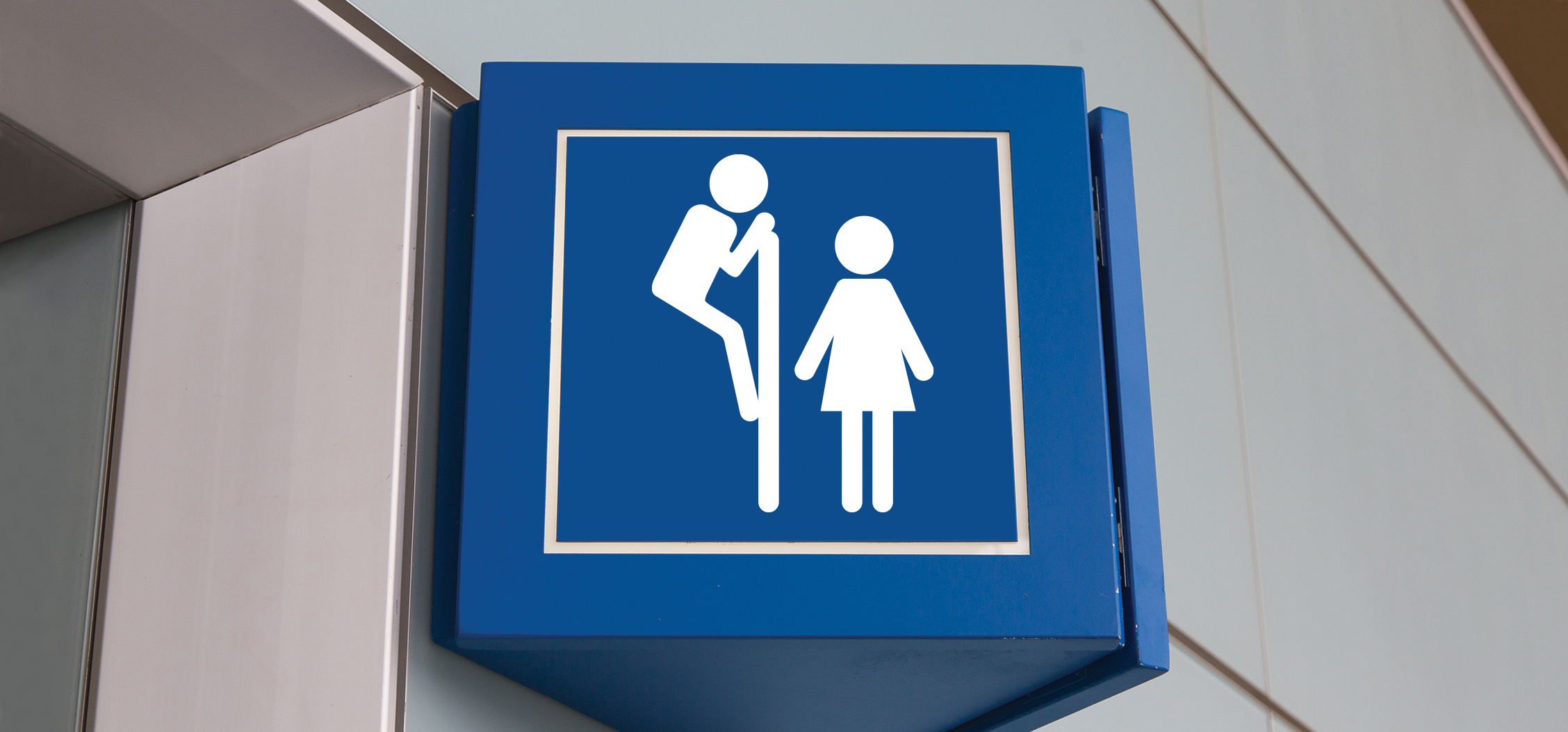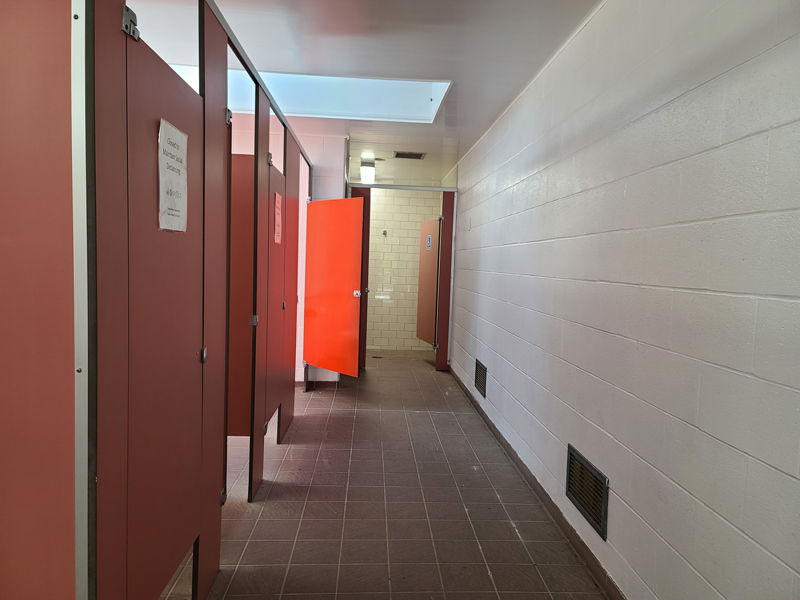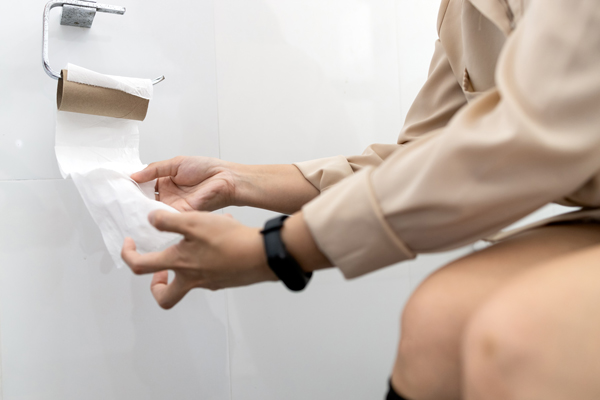
SURVEY INDICATES PEOPLE WOULD PREFER LESS EXPOSURE WHEN USING PUBLIC RESTROOMS
Do you still feel somewhat exposed even when you’ve locked the door in a public restroom stall?
You are not alone.
An online survey of more than 1,000 U.S. adults found the 70% of respondents feel that public restroom stalls lack sufficient “coverage,” with 58% indicating they would prefer the gaps around the stall doors and walls be eliminated.
Bradley Corporation’s annual Health Handwash Survey questioned 1,003 adults from around the country earlier this year, split nearly evenly between men and women. They were asked about their hand-washing habits, concerns about seasonal viruses and their use of public restrooms.
Taking the desire for more privacy one step further, 45% want the stall doors to extend all the way to the floor.
However, doing so would make it more difficult for many to be able to immediately detect whether someone is in the stall, as 74% of respondents say they look under the door to determine whether it is occupied.
Not to worry; there’s a solution for that. Nearly everybody — 96% of those surveyed — agrees that the best fix/remedy would be to place visual indicators on stall doors to show whether they are occupied.
Also, don’t you hate when there are multiple empty bathroom stalls in a row, you purposely choose one on the end, and then the next person selects the one in the middle?
Again, you have company, though not as much as before.
The survey found that 35% of respondents become annoyed when someone chooses the stall next to theirs even though others are available, and 40% said they select the stall farthest from the entrance.

Privacy and security are addressed in plumbing codes such as IAPMO’s Uniform Plumbing Code (UPC®).
The 2024 Uniform Plumbing Code (UPC®) follows the guidelines laid out in IAPMO/ ANSI/CAN Z124.10-2022 Standard for Water Closets and Urinal Partitions. The standard lists three types of privacy ratings: Type A includes partitions with doors that prevent visual observation and provides security of the user; Type B includes partitions that minimize visual observation; and Type C is for urinal partitions that prevent visual observation from adjacent users.
Type A requires the bottom edge of the partition, including the door, to be less than or equal to 4 inches off the floor and the top edge greater than or equal to 84 inches above the finished floor. The doors must lock from the inside and the device shall be readily distinguishable as locked from the outside.
For Type B, that number is 16 inches at the bottom and 69 inches at the top, with a maximum of a half-inch gap between the edge of the door and the partition wall. The doors shall be lockable from the inside of the partition enclosure.
Type C calls for the bottom of the partition to be a maximum of 12 inches above the floor, the top to be at least 60 inches from the floor, and the partition to extend at least 12 inches from the wall. In this instance the UPC goes further than Z124, which only calls for 16 inches above the floor.
Privacy-related issues were just one of the survey’s topics. Participants were also asked about germ avoidance and their hand- washing habits.
Concerns about COVID-19 persist, as 80% of those questioned said they are more conscious about coming into contact with germs as a direct result of the coronavirus, a 5% increase over last year.
The survey found that due to concerns over seasonal flu virus outbreaks, 74% of respondents wash their hands more frequently or more thoroughly, and 58% say they wash their hands frequently throughout the day during cold and flu seasons. These numbers have stayed consistent since 2022.
When it comes to public restrooms, 89% said they wash their hands after using such facilities. For those who said they did not do so, 54% said it was due to lack of soap or paper towels and 47% cited sinks that were dirty or faucets that did not work.
First conducted in 2009 and done annually since then, the survey found that 43% believe the conditions of public restrooms are getting better and 35% say they haven’t changed, while 11% think they are getting worse.
Participants were also asked for their restroom pet peeves. Used paper towels on the floor or around the sink were the biggest (62%), followed by splashed water on countertops and floors (46%) and careless or reckless behavior that damages the facility (41%). Additionally, roughly one in four respondents said they had dropped a personal item in a public restroom toilet, and three in four women reported having to use their foot to hold non-working stall door closed (compared to 49% of men).
The survey should be a wake-up call to owners of restaurants and other establishments, as 58% of respondents said unclean or unpleasant restrooms show poor management (up from 52% in 2023), 56% say it lowers their opinion of the establishment, and 53% say it shows the establishment does not care about them.


“The state of a restroom can have a measurable impact since we’ve found that consumers will avoid a business if it has poor restroom facilities,” said Jon Dommisse, vice president of marketing and corporate communication for Bradley. “Our goal with this research during the past 15 years has been to better understand hand-washing behavior and identify restroom pain points to help facilities better serve the public.”
While making public restrooms cleaner and stocked more frequently with toilet paper, towels and soap topped the list of improvements that respondents would like to see (41%), the second-most desired improvement was making everything touchless, at 34%. Faucets, flushers and soap dispensers were considered the most important touchless features.

Mike Flenniken
Mike Flenniken is a staff writer, Marketing and Communications, for IAPMO. Prior to joining IAPMO in 2010, Flenniken worked in public relations for a group of Southern California hospitals and as a journalist in writing and editing capacities for various Southern California daily newspapers.
Last modified: June 11, 2024

For non-automatic flushometers, Sloan Valve company makes or did make an anti-microbial flush handle with a green coating on it but didn’t do a very good job of educating the plumbing industry and the public.
No need to kick the handle with your shoe.
Eddie Edwards
The Drain Surgeon, Inc. founder